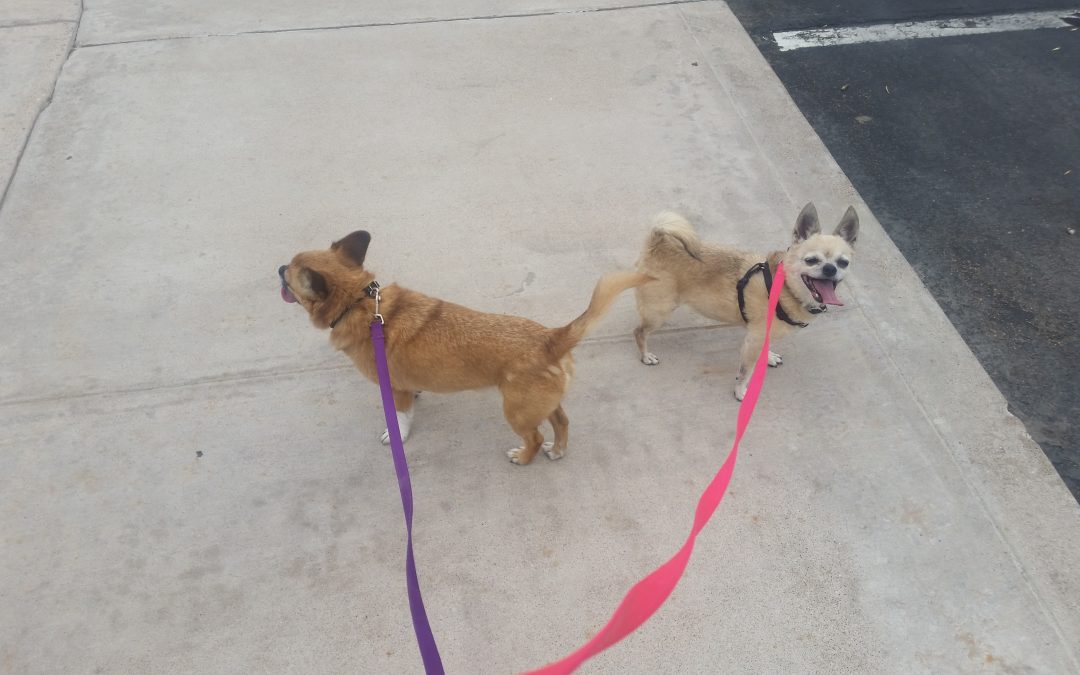
Pet Care, Pet Training
6 Tips for Dog Walking
Even if you do not like it, your dog definitely likes to take a stroll. You may be surprised by these tips for dog walking. After all, dog walking seems pretty easy. Dog walking is essential for maintaining your pet’s health and keeping them happy and active. Therefore, if you do not have the habit of taking your dog out every morning or evening, you should get started with at least twice a week and let the habit build. Dog owners will enjoy these tips for dog walking. They will help you master the art of dog walking sooner than you think.
1. Lead your dog
Always walk in front of your dog or by its side. If your dog is ahead of you, it will keep dragging you along with it and you will never know who is walking whom. Dogs are naturally programmed function in packs so they will only find it natural if you lead them. Make sure you are the first one to step outside your house every morning and the first one to step in when coming back from the walk.
2. Switch to shorter dog leash
Many believe that having longer leashes would allow your dog to walk freely, but longer leashes mean less control and increased chances of your dog running in the middle of the road with you running after. Shorter leashes allow you greater control on your dog and you can easily direct and train them. However, when buying the leash, make sure it is not hard on the skin and not hazardous in any way.
3. Set aside fixed hour each morning
Dogs are diurnal and they like morning walks, so set aside an hour every morning for the walk. However, the need may vary from breed to breed, so have your dog’s vet tell you how much time a day would be suitable for your dog’s health.
4. Let your dog sniff around
Dogs like to sniff around. It is their playtime activity and they enjoy it more than anything else. This is how they gather all the information about what is going around them. You as a dog owner should know how important this walk is for their health and mental stimulation. If you do not want to stop at every step while your dog sniffs every next thing, you can loosen the leash for a bit after a while so you can walk without constantly running after your dog.
5. Do not forget to treat your dog!
Dogs are famous for learning through reinforcement method – treat them when they behave good to promote that behavior and turn it into habit Every time you complete a run or a walk with your dog, treat them with their favorite meal and give them plenty of water to replenish from the walking and sniffing. By doing this, you will be conditioning your dog in a way through which they will look forward to daily walks.
6. Clean what he leaves behind
A good dog walker is also a good citizen. Clean up dog poop if they leave any on the walk and properly dispose it off. It won’t be a pleasant thing to do, especially when you are out on a good sunny day but it only makes you a good dog owner and a responsible neighbor.
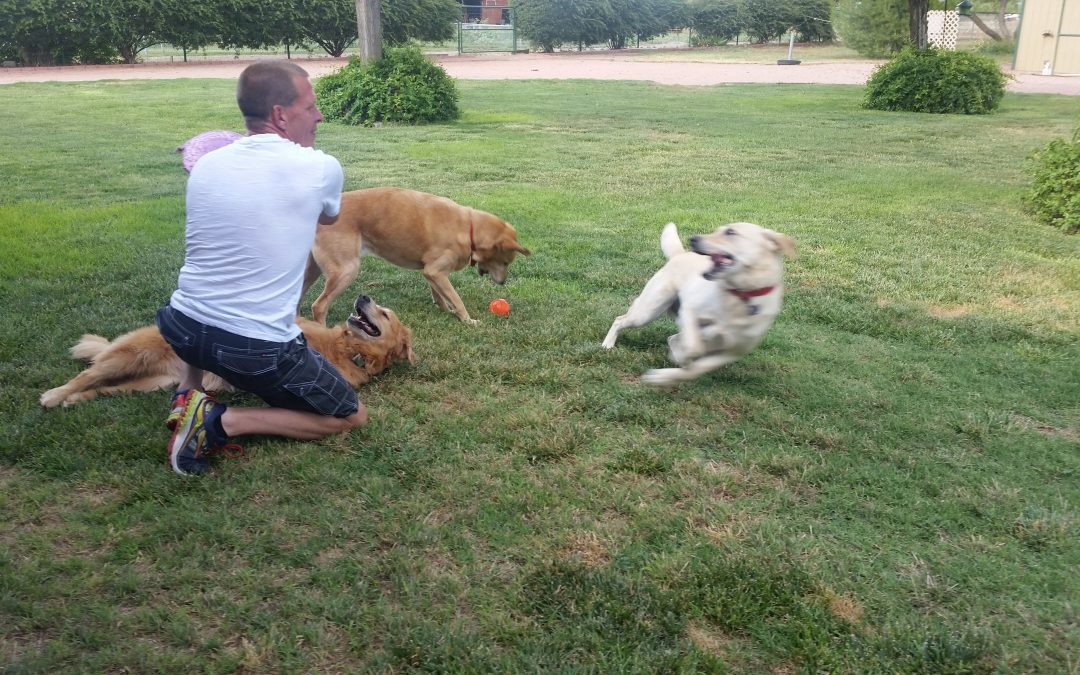
Pet Care, Pet Health, Pet Training
Responsible Pet Ownership
Responsible pet ownership is nothing less than caring for a child. Luckily, most pet owners do consider their pets a part of their family. However, loving is not enough when it comes to being a good and responsible pet owner. Just like you work on raising your child, work on his education, make sure he is eating a well-balanced diet, his hygiene is maintained; you do the same with your pet as well. If you are wondering what should you do to become a responsible pet owner and how it is more than just loving your pet, continue reading the post.
Caring for Your Pet’s Physical Health
Taking care of your pet’s health – It does not matter if you have gotten your pet vaccinated or not, regular checkups are must. With us humans, we can easily tell if something is not okay or not feeling well, but since we don’t speak the language of our pets, we don’t really know what might be going inside their body and how they are feeling. This is why it is important that you get their monthly physical check-up scheduled. Your pet’s health includes making sure they are free from fleas and parasites which can be sucking onto them and eventually weakening your pet. Also, get your pet’s teeth brushed twice a day as well.
Caring for Your Pet’s Diet
Healthy and balanced diet – Like every living being, your pet also needs a complete diet that’s a combination of fats, carbs and proteins to maintain a healthy gut system. Homemade pet food is the best option for pet food. However, even if you are buying instant pet food, make sure it contains the daily nutritional requirement of your pet. Also, do not feed your pet too much. Diabetes and obesity does not only exist in humans. It can also affect your pet and make them sick and lethargic.
Spay and Neuter Your Pets
Be sure your pet is spayed or neutered – Some might think this practice is unethical, but pet overpopulation has become a serious problem because not everyone is a pet lover nor there is enough space in pet shelters. Which is why getting your pet neutered is important to control the pet overpopulation. It also reduces the risk of your pet getting testicular cancer and other health risks.
Being Prepared
Be prepared for pet emergencies – Just as you always make sure to keep a baby bag prepared with all the baby essentials in it, you have to do that for your pet too. Keep all the emergency supplies ready in a kit including eye ointments, vet wraps, gauze, hydrogen peroxide, anti-septic, and tweezers. Also, keep a pet first aid book at hand, especially when travelling with your pet in a car.
Basic Training
Timely training – We are not just talking about professional training here; basic training is equally important for your pet. It stimulates their mind and keeps them active and happy. Reward based training is known to help in promoting good mental health in your pet and enhance the relation between the pet and owner. Training also conditions and eliminates violent habits from your pet’s behavior, making them friendly and calm.
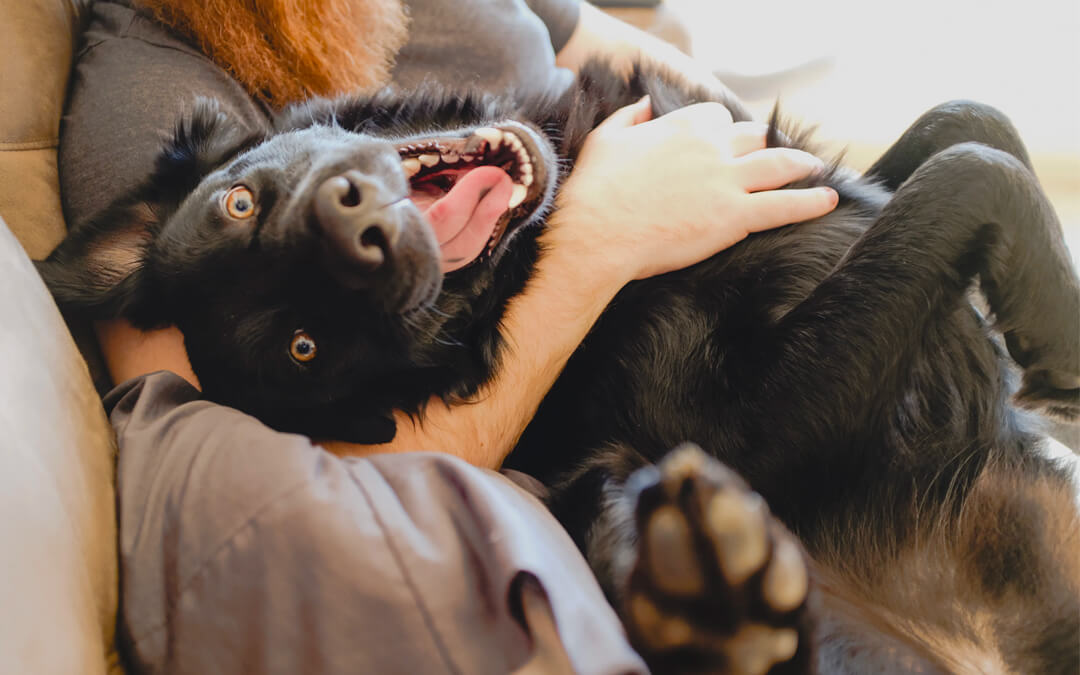
For Pet Sitters, New Pet Owners, Pet Care
Choosing a Pet Sitter
That Your Dog will Love
In today’s busy world, it often becomes difficult to care for your pet the way you’d want to. So enters a positive alternative; a doting pet sitter. Choosing a pet sitter that your dog will love may seem daunting. With the right tools, you’ll be all set to make a choice that your furry friend will love. Read on for what to consider when looking for a pet sitter.
1. Have a Background Check of the Potential Sitters
You are looking for someone to take care of your pet in your absence, and you have to make sure you leave this responsibility to someone who is responsible enough to treat your pet as their own. Before hiring a pet sitter, ask around about the sitters offering their services in the vicinity. If they have an online page, look for testimonials and reviews by their previous clients. Moreover, make sure you meet them once or twice in person before you finally hand them the responsibility to take care of your pet. Do not hire a sitter who has no prior experience with animals because even a minor careless act from their side can be dangerous for your pet.
2. See How Resourceful They Are
See how knowledgeable your pet sitter is and we’re not talking about the general knowledge here only. A good pet sitter must have thorough knowledge about animal care, with a good understanding of ergonomics. Ask your pet sitter if they know the safety measures to be taken in emergency or if they know where to take the pet if something goes wrong with it. Check if they have a sound understanding of animal psychology to respond to your pet’s separation anxiety or changes in its moods. If you feel like the sitter has enough knowledge to be trusted, hire them.
3. Do They Have a Pet Friendly Home
Leaving your pet in someone’s care is not an easy thing for a pet owner. Not being sure if your pet would be safe while you are away can add extra mental burden. A pet friendly home lessens that burden by assuring you pet security. Make sure the sitter’s house is equipped with all essential safety measures for the pet. If there is a yard, make sure it is pet-protected with high fences and no loose wires hanging here and there. As for interior, it would be better if there is paw-friendly flooring and small carved out spaces for pets to hide in, otherwise chances are they will end up stuck behind the washing machines, sofas and what not.
4. They Should Genuinely Love Animals
Dogs have a strong sense of judgment and they would know who is friendly enough to take care of them. Dogs can sense it on people if they have pet aversion and they will act distant around them. When choosing a pet sitter, make sure they genuinely love pets, especially cats and dog. Also, make sure is the sitter is patient with the animals. You do not want someone to scare off your pet while you are away.
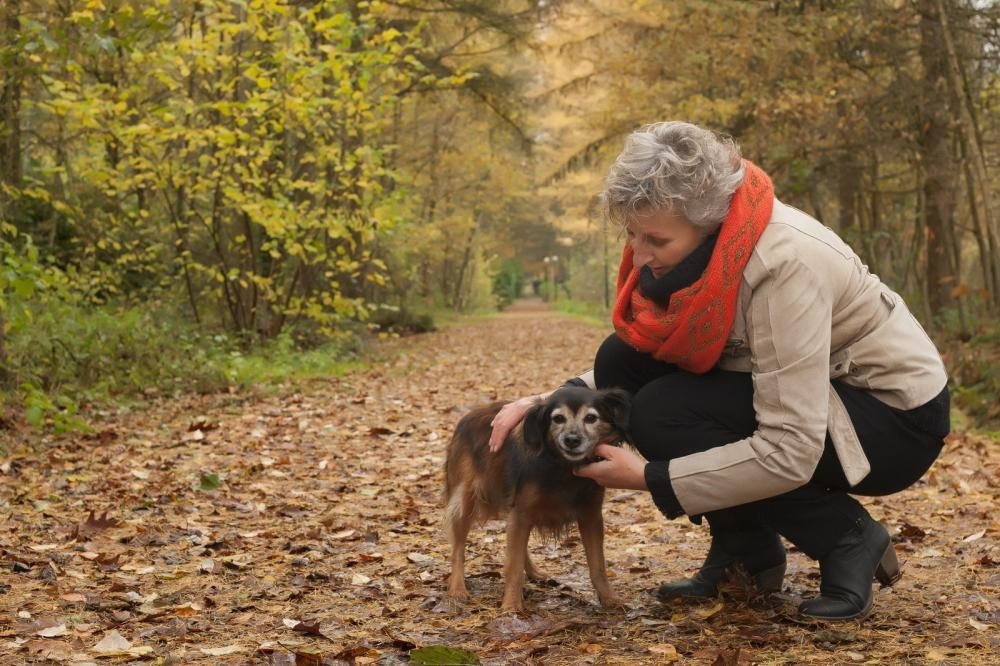
Pet Care
5 Tips for Vacation Pet Care
Going away on vacation is a fun time for you and your family. Feeling comfortable with your vacation pet care can make things a little more difficult. However, you can rest easy when you know that your furry family members are well taken care of during the time you’re away. We’ve put together a few tips that will help.
Detailed Instructions
Make sure that whomever is watching your pets has detailed instructions. You may have someone coming over to take care of the pets, or have them boarded. Either way, you’ll have to leave detailed and clear instructions on their care. Vacation pet care instruction helps eliminate confusion or guesswork of any sort. These instructions should include exactly how much food your pet should be given for each meal, how many treats they get, what medication (if any) they’re on and how much of that they need to take, and any other vital information. If you’re going to have a pet-sitter, it’s a good idea to have them come over in advance so you can show them where everything is and walk them through the routine, as well as introduce them to your pet.
Mention Important Personal Details
If your animal has any quirks, do the babysitter a favor and mention them so that they know what to expect and are prepared to keep the pet safe. For example, does your dog tend to get into fights with the mailman? Will Fluffy socialize well with other animals? Does your pet behave well when on the leash? Does he bolt after squirrels or cats? Point out these behaviors to the sitter so they aren’t taken by surprise.
Update Pet ID Tags
While not common, animals in strange surroundings or with strange people may get nervous and make a run for it. If so, you’ll want to ensure that their pet ID tags are updated and that they’re wearing the phone number you’re using on vacation so you can be contacted in case of an emergency.
Leave a Few Little Comforts for Your Pet
You’re not going to miss your pet all on your lonesome; it’s going to miss you quite a bit as well. Take some steps to keep it as comforted and content as possible. This becomes crucial when a sitter is doing the job. Leave an old shirt in its bed or sleeping place to comfort it with your scent, or a treat leaving toy so it’s occupied. Let the sitter know what its exact routine is, so everything is as familiar as it can be.
Say Goodbye Normally
The more dramatic and long drawn the goodbye, the greater the chance that your pet is going to start feeling anxious. Leave the pet like you normally would when you go outside. The swifter your departure, the more relaxed your pet will feel. It may be hard for you to remain so calm and composed when you’re going to leave your beloved pet for a stretch of time, but it’ll only make the reunion all the more worth it.
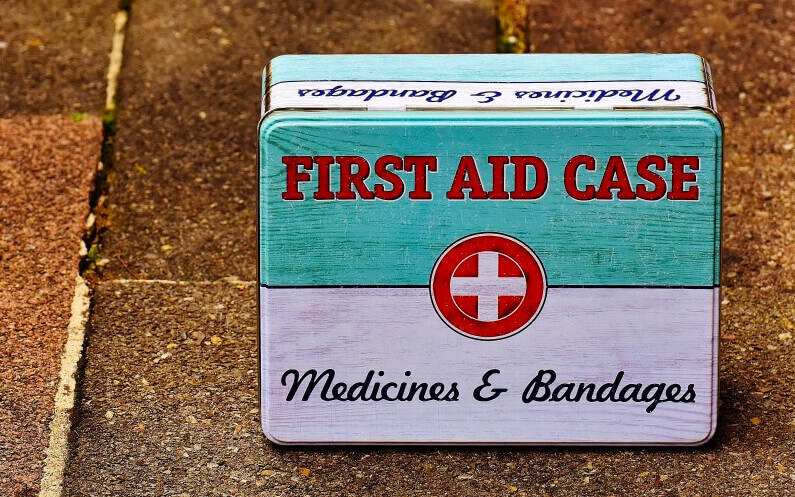
Pet Care, Pet Safety
Emergency First Aid Tips for Pet Owners
Since emergencies don’t come with prior notice, the only way to handle them is to be prepared. One might think pets would require the same emergency care as humans. However, since animals are biologically different from us humans, there are different guidelines for emergency care. Here are some first aid tips for pet owners so that you’re prepared to properly handled emergencies at home before heading to the doctor.
Give Your Pets Space
If your pet is in distress, hurt or in pain, be sure to maintain a safe distance from them. Even the friendliest of animals tend to become aggressive when in pain and may bite anyone in close proximity. Keep a muzzle at home for such situations to minimize further injuries. If you do not have one, you can make one at home using a belt strap and tying it around your pet’s mouth.
Be Quick
Do not waste time deciding if you can treat the pet on your own. If you have even a slightest doubt about knowing what is wrong with your pet, call the doctor immediately. Quick thinking can be your biggest asset in such situations. Put vet’s number on speed dial.
What to Do If They are Vomiting or Experiencing Diarrhea
If your pet has been vomiting or has diarrhea, do not feed him for 24 hours except water. After 24 hours, start feeding them with light meals and see if their condition gets any better. If not, contact the doctor.
Do Not Self-Medicate
Often, people are tempted to treat their pet on their own by giving them medicines that they think are suitable or suggested by another pet owner. However, you never know which medicine might be toxic for your pet since every animal is different. Not every medicine will work. Some may cause harm.
Heat Stroke
Symptoms of heat stroke in animals may include bloody diarrhea, feebleness, excessive panting, vomiting, or excessive salvation. These can also be a sign of abnormally high body temperature. In extreme heat summer days, measure your pet’s temperature. If it is above 104oF take immediate precautionary measures. Do not put your pet in an ice bath in such condition; it will slow down the cooling process. Keep your pet in shady areas, where it is cool and they have access to water all the time. Contact your veterinarian.
Pet Wounds
If your pet is bitten or wounded, take them to a vet immediately to prevent infection. Have them checked for internal wounds. If your pet gets involved in a fight with another animal, never come in between them. Chances are you may be bitten too.
First Aid Emergency Kit
You should always keep an emergency first aid kit with you, especially if you are traveling. It should have gauze, plastic wraps, anti-septic, eye ointment, thermometer, tweezers and bandages. You never know what minor injury may happen.
Abnormal Behavior
If you notice your pet is not sleeping, eating or playing as it usually does get him checked to identify any underlying illness. Also, be aware if your animal is using the bathroom as they would normally. This too, can be a sign of abnormal behavior.
Short of your animal learning to speak, they cannot effectively communicate their problem. it is our responsibility as pet owners to remain attentive to any unusual behavior in our pets. Our watchful eye allows them to receive the care they need in a timely manner.
For More Information
If you have questions about raising a puppy or general questions about pet care, you can contact Kara Jenkins, Owner of TLC Pet Sitter. We are also available by email at info@tlcpetsitter.com.
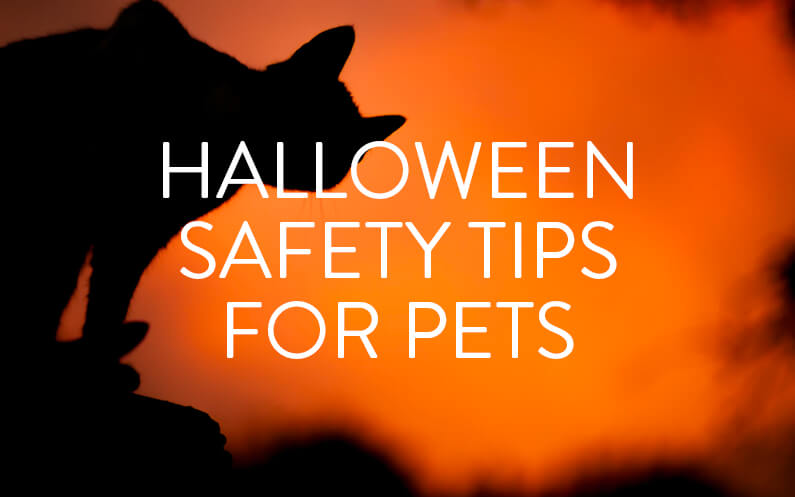
Holiday Tips, Pet Care, Pet Safety
Halloween Safety for Pets
Halloween is a time of fun for us. However, we often forget to consider our furry little friends during our party-prep. Halloween safety for pets is often last on the list of to-do items. Pet owners tend to ignore how a simple night where everyone just seem to have fun, can affect their pets. Animals are sensitive and very receptive to vibes; they are easily stimulated and can get startled within an instant. Given the nature of Halloween, there is often too much going on for your pets to take in and still remain calm. As such, we’d like to offer some tips for Halloween safety for pets. We’d like to help you keep your pet happy and out of danger.
Candy Can Be Poison to Animals
Do not feed your dog or your cat any candy. It might seem like nothing but it can be poison for your pet. Feeding chocolate to your pet can give them diarrhea, disrupt their breathing, cause a seizure and in extreme cases, even cause death. Make sure you do not feed the treats to your pet, and let your friends and family know they should refrain from doing so. Make a tag with ‘no pet feeding’ written over it put it outside your door so the kids around the block would refrain from doing so.
Let’s Not Put a Tutu on Your Pet
We understand how you cannot wait to put on your Halloween costume on, but putting one on your pet should be reconsidered. Animals do not feel the same way about clothes as we do. They are more relaxed when they are how they naturally are, in their own skin. If you must dress them up, make sure the costume is loose, airy and breathable for your pet. Also, make sure the fabric is not irritating for their skin otherwise they would simply chew off the costume.
Do Not Let the Dog Out!
With all the noise and hoo-hah going on outside, it is very likely that your pet can get startled and spooked in between all that. Cats and dogs can go into shock if they see something uncomfortable. Moreover, there are always kids in your neighborhood who cannot seem to leave your pet alone. Keep your pet inside so the chances of your pet getting in their hands are reduced to none.
Keep the Lights Away from Your Pets
Ensuring that wires and decorative objects are away from your pet’s reach is important this time of year. Otherwise, it is possible they can get tangled up in them, chew them off, or get quite the shock.
Make Sure Your Pet Can Return Home
No matter how careful you are, there are always chances of your pet getting loose or getting lost. Which is why having a pet i.d. along with your address around their neck is important. This way, even if such thing happens, they can always be returned home. You can also put a tracking chip inside the i.d. so they always remain on your watch.
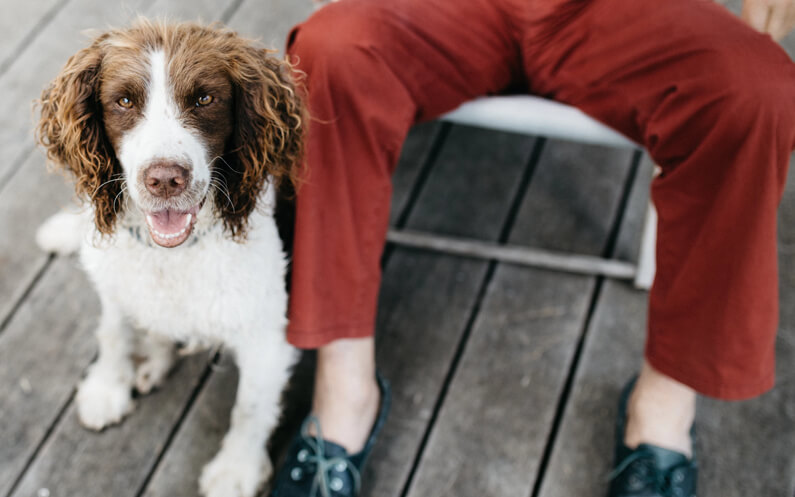
For Pet Sitters, Pet Care
How to Care for a Pet While Pet Sitting
So you’ve bagged yourself a pet-sitting job and are wondering about the basics of the job. Well, this article is a short guide that should help you understand what your work entails. Let’s have a look at how you are supposed to care of the animal.
1) Follow Instructions
The pet owner will have likely left you with a list of instructions to care for your pet. Follow these instructions to a tee, as well as any schedule they’ve provided. Make sure to feed the pet at the appointed time, and to give them the right quantity of food. Some cat owners allow their pets to have free access to dry food at every point of the day, so make sure to keep bowls filled if this is the case. Clean water is a must as well. Ask the owner before you bring in any treats or food from outside, since the pet may be on a specific diet which variations might upset.
You will also have been instructed on any meds the pet is taking. Be careful to not deviate from the regular dosage and schedule, and never neglect or forget this. Plus, ensure that the litter boxes are cleaned regularly. The bottom line’s pretty straightforward: follow the instructions and you should be fine.
2) Be Attentive to the Pet’s Needs
A pet sitter’s role exceeds simply providing the pet with the necessities of life. You’re also expected to keep the pet feeling comfortable and safe while their owners are away. Pets tend to become nervous or timid when their owners aren’t around (or even aggressive). That’s why it’s so important the pet sitter show them attention and affection every day. Play with the pet with their favorite toys until they get tired and sleepy. Stroke and cuddle them, and give them the human interaction they desire.
3) Do Some Extra Work
No, this isn’t part of your job description, but performing extra tasks can display your dedication to the owner and help differentiate you from other sitters. Try to do some basic upkeep. You could keep the home clean, water the plants or collect the mail. However, take care to not disturb the organization of the house in your zeal to be efficient. So if you wash dishes, don’t put them back. Leave them be so the owner can arrange them as they prefer.
For More Information
If you have questions about nail clipping for dogs or general questions about pet care, you can contact Kara Jenkins, Owner of TLC Pet Sitter. We are also available by email at info@tlcpetsitter.com.
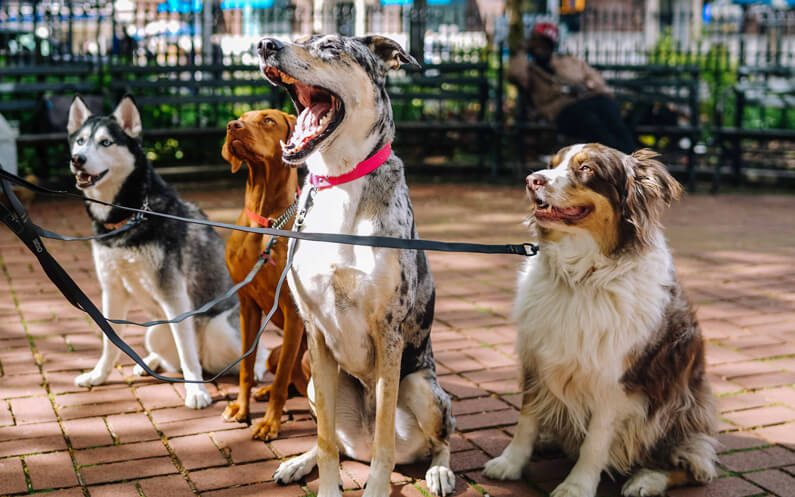
Pet Care, Pet Health
Hiring a Dog Walker for Midday Walks
5 Reasons Why You’ll Want To
Hiring a dog walker is easier than you think for midday walks. You see them every evening. Sometimes in the morning too.
People parading with pups. One, two or three happy dogs, walking sedately or bouncing around to test every tree or telephone pole.
Why Midday?
But why just at both ends of the day? Of course, that’s when their guardians are home. What’s a poor pup to do with all those lonely hours inbetween? Just sit, wait, and wonder?
Here are some reasons to exercise your dog in the middle of the day. You can’t be there – but there are professionals who can be. See how it helps your pup:
- No more lonely dog. Now instead of long stretches of boredom, your dog has companionship and exercise to look forward to every day between the hours that you go to work and return home.
- Puppy in a box. Many people – maybe you – keep their dog in a cage during the day, most often to protect their cushions, shoes and other chewable items. But puppies can’t go eight hours without a potty break, and honestly, neither can older dogs. A midday dog walker can easily give your precious pets the exercise and bathroom breaks they need.
- Speaking of exercise. Dogs are active beasts … they love to run, jump, run, fetch, sniff at stuff, and run some more. It keeps them fit and alert. Being stuck at home all day doesn’t do it for them; just the same as being stuck at the office doesn’t do it for you. A midday dog walker is a real blessing at times when you can’t be there.
- You’re working too hard. Or at least too long. If you’re one of those who have to work a 10- or 12-hour shift, imagine doing that without a bathroom break. Poor Fido. Add to that the time you spend with your friends after work, or the errands you have to run. You feel guilty … and rightly so. (By the way, did you know that “Fido” is Latin for “I am faithful”?)
- No worries. Best of all, hiring a midday dog walker resolves all these issues, and brings both you and your pet/s real peace of mind. No worries for you, and lots of fun, exercise, and companionship for your fuzzy friends.
Find out what the Animal Foundation, a 501 (c)3 organization in Las Vegas, has to say about the importance of midday dog walks.
Is there a cost? Well, yes, you’ll write a check. But it won’t be for much – dog walkers often walk more than one client’s pets at a time, so the cost is shared and relatively minimal. Because you love your faithful friend, this is something you really should look into.
Questions About the Hiring a Dog Walker in Arizona?
If you have any questions about hiring a dog walker, or other questions about pet care, you can contact Kara Jenkins, Owner of TLC Pet Sitter. We are also available by email at info@tlcpetsitter.com.

For Puppies, New Pet Owners, Pet Care
Things to Consider When
Buying a New Pet

Buying a new pet? Introducing a new pet into your family is the same as bringing a new family member into your house. Pets do not just occupy space in your house but also in your daily life. You become responsible for your dog. This includes among your family members, your friends and the community you live in. That is why your choice of pet matters. When buying a pet, impulses and your love for them is strong. However, make sure you give them a good healthy life and a comforting home. There are many things to be considered before buying a new pet or adopting an animal.
Are your family members and the choice of your pet compatible?
The very first thing to consider is, whether the other family member in your house or anyone who shares the room with you is okay with having animals around them. Ask them if they have any special allergies with cats or dogs or any animal in general. If you have kids at home, make sure they are friendly and welcoming towards pets. This is important because your pet will not only be sharing its life with you, but also with everyone else living with you.
Is your house compatible with the choice of your pet?
Your pet may not have a say in choosing where you live, but before bringing a pet home, it is important to make sure whether your place would be suitable for them or not. If you are getting a dog, you would have to make sure your house has enough space for them to play around, run and have their own little space.
You also have to make sure your house is fenced, so your pets do not get out. Moreover, the temperature of that place should also be considered. If you live in a place with a hot climate, it is essential for you to make a shady and cool living area for your pet so they can remain unaffected by the heat.
Does your community or your apartments allow pet?
It is understandable that you cannot get a pet if your housing community or your living facility does not allow pets in homes. There might be some exceptions even in such buildings, and they may allow some kind of animals as pet. So, it is better that before buying pet, you discuss it with your property owner about the rules and regulations related to keeping pets in your building.
Is your lifestyle compatible with your choice of pet?
We live in times where most of our time is spent outside of the home. We do not really have much time on our hands left by the end of the day and time is the most important thing your pet would want from you. Dogs are very friendly and they need you around them most of time. Therefore, if you know you cannot make time for them, you should not adopt a pet. However, if you already have decided to get one, then make sure you have someone at home to take care of it and take it on walks everyday in your absence.
Questions About Buying a New Pet?
If you have any questions about buying a new pet, or other questions about pet care, you can contact Kara Jenkins, Owner of TLC Pet Sitter. We are also available by email at info@tlcpetsitter.com.
Pet Care, Pet Health
Helpful Diet and Vet Care Tips for Dogs
If you want to have a long, beautiful relationship with your dog, then you should educate yourself on the basics of puppy health care. A foundation of good health starts with diet, and this should go hand in hand with routine, preventative veterinary care for your pet! Skip out on either of these, and you may be sorry later down the road. A poor diet can lead to obesity, liver failure and even diabetes. Skipping out on routine vet care could mean that your dog is silently suffering a preventable problem without ever knowing about it! Stop poor health before it starts with these diet and routine care tips!
First Vet Trip
The very first thing you should do with your new dog or puppy is take him straight to the vet! In fact, most contracts from both ethical breeders and rescues will state that an examination by a licensed vet within 72 hours is required! This is to make sure your new best friend is healthy and coping well in his new home. He may also receive booster shots at this point, which is typically a 5 way vaccine that includes protection against deadly Parvovirus.
The Wellness Examination
Even if your dog is an adult, you should not forget about his yearly wellness exam! This is the exam where your vet will look and feel in places an owner normally will not. He will feel your dog’s stomach for anything out of the ordinary, feel his organs to make sure they are of normal and healthy size, and make sure your dog is over all healthy. He will also check inside ears, mouth and even express your dog’s anal glands if it needs done! If anything does seem out of the ordinary, your vet may have caught it in time before it became a serious threat to your pet’s life.
Nutrition for Health
Your dog needs to have a diet that is tasty, but also one that is healthy for him. Unfortunately, most manufactured pet foods, even the most popular ones you see advertised on television, are the worst for your dog’s benefit. Seek out foods that are grain free and made from whole foods instead of just meals and flours. Better yet, find a recipe book for raw or cooked homemade meals to keep your dog as healthy as he can be!
Don’t Be Fooled by Labels!
Sometimes a dog food product may seem like a great choice, but the nutritional ingredient list will tell the truth! Always read the ingredient list. The first three items listed are those in which the food holds the most of, so you must make sure no meals, by products or grains fall as those first three ingredients. You will also be able to seek out important items on an ingredient list. For example, if you want a high fiber food for a dog with digestive problems and find a food that claims to have pumpkin in it, flip the bag over and read the list! The further down pumpkin is on the list, the less amount of pumpkin is actually in each bite. The only way to be 100% certain of what and how much is in your dog’s food is to make it yourself!
Educate Yourself
If you want to stay involved with your dog’s health and proper care, ask questions to your vet! Learn about canine diet and never stop accepting new information! Science discovers new things almost daily when it comes to the dogs we love so much. Your thinking and feel about your dog may change with the more you learn, and your love for him will only grow with more knowledge!
For Puppies, Pet Care, Pet Training
Socialization for Dogs
While many dog owners believe their dog to be the friendly sort, and they very well may be, the act of socialization goes far beyond just saying his to house guests. It goes beyond meeting new people, trips to the Dog Park and doggy play dates, too! Socialization includes items that may be strange to a dog, different floor textures, sounds that can be scary and more. You can start your dog, at any age, down the road to being well socialized with patience and care.
The Fear Periods
While all dogs are continuously learning throughout their lives, including socialization, the two fear periods in a puppy’s growth are probably the most impressionable. These two times in your puppy’s life are when objects, people, other animals and dogs can hardwire a certain emotion and reaction in your dog. The experiences he has during his fear periods are the ones that he will carry with him for the rest of his life, even the bad ones. This is why trainers, breeders, rescuers and veterinarians always stress socialization during puppy hood, because these emotions and behaviors that your puppy learns at this time become difficult to change in the future.
The first fear period
The first fear period will begin before your puppy is even weaned at four weeks old. If your puppy came from, or is coming from a breeder then it is up to your breeder to begin socialization at or before this time in your puppy’s life. The same can be said for a rescue or shelter! It is incredibly important for a puppy at the beginning of his four weeks of life to begin learning new things and have a positive exposure to things that may seem scary to a dog. This first fear period ends at about twelve weeks of age, which means you will receive your puppy during his first fear period! This is a prime opportunity to begin training immediately and form a wonderful bond with your puppy.
The second fear period
The second fear period is a guess, as each individual puppy may be slightly different. It can occur anywhere between seven and eight months of age and lasts for two weeks. During this time you may see more flighty behavior from your puppy, hence the name fear period! It helps to know your puppy well so you can realize quickly that he has entered his second fear period. While socialization should be taking part on a regular basis no matter what your dogs’ age is, this is the most ideal time to introduce him, or reinforce socialization with items and people specifically as well as work on preventative training so your dog will not become reactive in the future.
Exposure vs. Experience
Exposure is needed to socialize a dog, whether you are working on introducing him to umbrellas or other animals. However, exposure alone will not socialize your dog! The key to a well socialized dog is the brief, positive experience he goes through while the exposure is taking place. This does not mean you need to give your dog a treat after he cautiously explore a scary hat on the ground, but instead encourage him to explore it more and when he’s done give praise and move on. It literally can take minutes to socialize your dog with an item!
Nothing Forced
When it comes to socializing your dog with people, especially if you have a shy dog, the trick is not to force him to allow others to pet him. Forcing your dog to let strangers put their hands on him will work against you in socialization. If your dog is shy, let him just observe people, and when a stranger asks to pet your dog don’t feel obligated to let them. Just kindly tell the person your dog is in training, and most people will happily accept and understand to respect your dog’s space.
When your dog becomes interested in the people, and not providing fearful or cautious behaviors, like leanings towards someone without stretching out his back legs (as this allows him a quick exit,) you can allow a person to pet him. Ask the person to kneel at his level, while providing their side not chest in his direction and let your dog approach. This makes the person look inviting instead of threatening, and gives your dog the ability to have a positive social experience with a stranger. Once should be plenty for a shy dog, but an outgoing pup may want to meet humans as many as possible!
Never Stop
Dogs learn for life. No dog is too old to learn new things, not even socialization! If you adopted an adult or senior dog, don’t feel as if you don’t need to help him become comfortable with new or strange things. Even if something is scary to him, he will love to learn something new and be more confident instead of fearful. Never stop teaching any dog new things, especially when it comes to socialization!
Pet Care
Animal Anxiety – What Your Pets Experience
Have you ever considered what goes through an animal’s mind when, even for a short time, it is separated from its owner?
Separation is Difficult
Pets can understandably become very confused as to why you are leaving. They can also be frightened that you may not return. Regardless of what goes through their minds, some animals can suffer trauma from these instances of anxiety. We may know that we’ll see them again soon however, these seemingly simple situations can cause separation anxiety in a pet. It may not seem like such a big deal, but development of phobias such as separation anxiety can result in unhealthy behavioral, habit, and psychological changes in your companions. But how will you know if your pet has been afflicted with trauma?
Signs and Symptoms
There are signs and symptoms of animal anxiety that can shine some light on the problem.
These include trembling and increased signs of fear, withdrawal, increased panic, biological changes, stress showing through physical appearance such as fur loss, and much more. Unfortunately, short separations are unavoidable at times.
Another option to combat animal anxiety is to hire a pet sitter. A professional pet sitter will give your pet all the love and care it needs until the owners return.
We hope this information will help you keep in mind the importance of quality care and attention for your pets.









